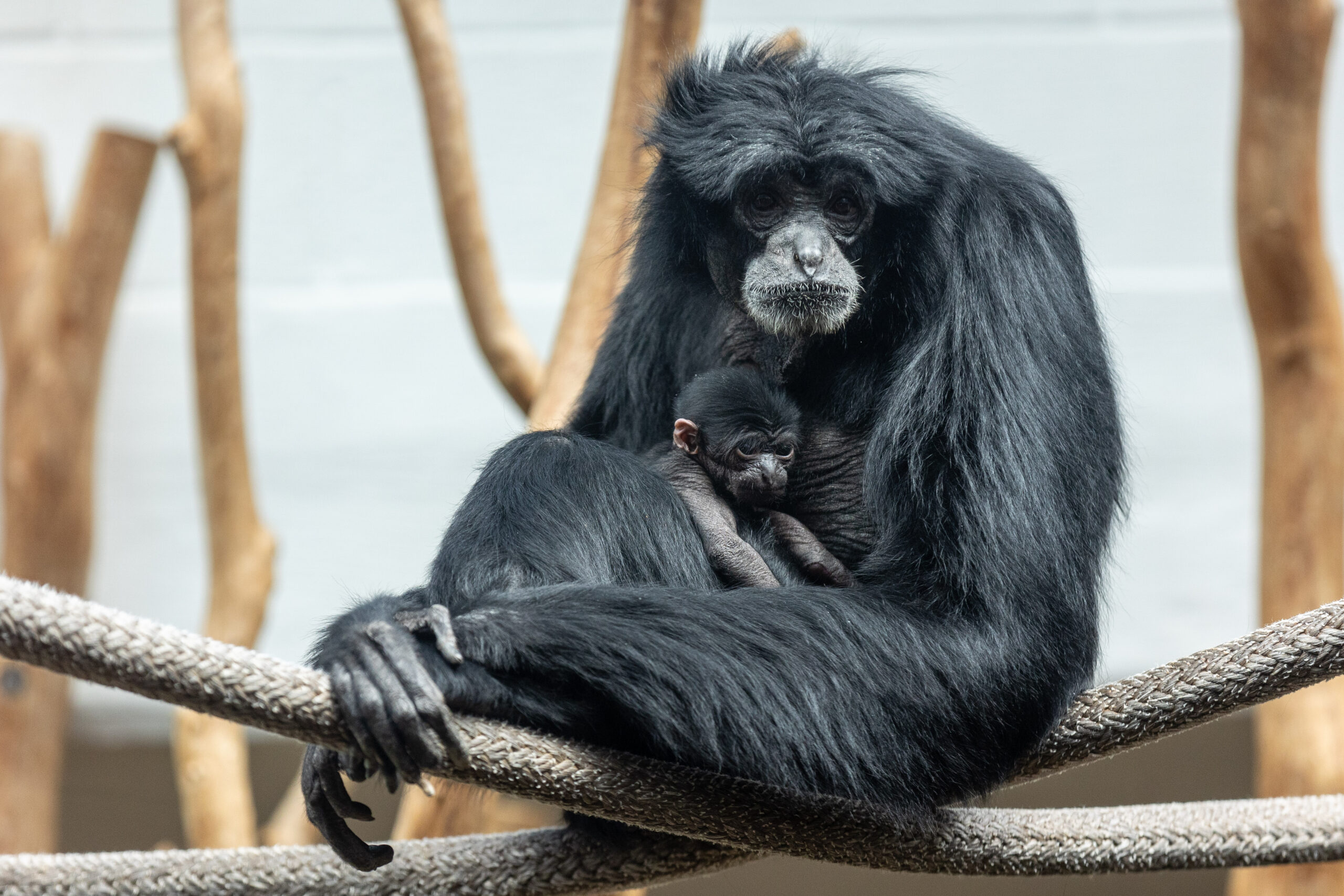Summary of Endangered Siamang born at Virginia Zoo:
A newborn endangered siamang was welcomed at the Virginia Zoo on March 15, 2024, marking the fourth birth of its kind at the facility. The baby, born to experienced mother Malana and father Bali, is a significant addition thanks to the Siamang Species Survival Plan® efforts by the Association of Zoos and Aquariums. Despite the advanced age of 35, Malana, along with family members Bali and older brother Lovejoy, are adjusting well, demonstrating strong family bonds that include shared “singing” sessions, a key facet of their social structure. This event highlights the zoo’s commitment to conservation and care for endangered species, with the Siamang family expected to make public appearances starting March 19. The baby’s gender remains unconfirmed, with further updates anticipated via the zoo’s social media. Siamangs, native to Malaysia, Indonesia, and Thailand, are endangered due to habitat destruction and illegal trade, emphasizing the importance of such successful breeding programs.
– The critically endangered status of the siamang species and the factors contributing to their decline.
– The significant role of the Virginia Zoo and the Association of Zoos and Aquariums’ Species Survival Plan® in conserving siamangs.
– The unique social structure of Siamang families and their significance in the upbringing of offspring.
– The ecological importance of siamangs in their native habitats across Malaysia, Indonesia, and Thailand.
The Virginia Zoo’s addition of an endangered siamang baby to the family marks a crucial step forward in conservation efforts for this species. Born to parents Malana and Bali, the newborn represents hope for the future of siamangs, a species currently facing the threat of extinction due to habitat destruction, hunting, and the illegal pet trade.
Siamangs, characterized by their jet-black fur and distinctive inflatable throat sac, play a pivotal role in the biodiversity of tropical forests in Malaysia, Indonesia, and Thailand. Their calls, heard over a mile away, are vital to their social structure and mating rituals. These lesser apes form monogamous pairs, sharing a bond strengthened by their unique vocalizations. Unlike many species, siamang fathers actively participate in the upbringing of their young, showcasing the species’ complex social dynamics.
The birth of the siamang at the Virginia Zoo resulted from a breeding recommendation from the Species Survival Plan®, an initiative spearheaded by the Association of Zoos and Aquariums. This plan is instrumental in managing endangered species’ populations across certified facilities, emphasizing genetic diversity and overall population health. The plan aims to prevent the extinction of vulnerable species like the siamang through meticulous planning and cooperation among zoos.
Upon discovering the newborn clinging to Malana, the zoo’s animal care staff immediately monitored the family dynamic closely. With Malana being a senior animal, her ability to mother at 35 years old—well above the median life expectancy for siamangs—is a testament to the care and expertise provided by the zoo staff. This birth also highlights zoos’ critical role in the preservation and scientific study of endangered species, providing invaluable insights into their behavior, biology, and reproduction.
The family structure and bonding practices observed among the siamangs at the Virginia Zoo offer a fascinating glimpse into these apes’ complex social lives. The male siamang’s involvement in grooming and caring for the offspring underscores the significance of paternal roles in the animal kingdom, deviating from more commonly observed maternal-centric family structures.
Moreover, siamangs’ ecological impact extends beyond their social interactions. As inhabitants of dense tropical forests, siamangs are vital for seed dispersal, contributing to the health and diversity of their ecosystems. The decline in Siamang populations threatens their survival and the balance of their native habitats. Consequently, the conservation of siamangs is a matter of saving an endangered species and preserving the ecological integrity of Southeast Asia’s tropical forests.
The Virginia Zoo’s collaborative efforts, along with the guidance of the Species Survival Plan®, embody a proactive approach to wildlife conservation. By fostering a healthy, genetically diverse population of siamangs, these institutions serve as stewards of biodiversity, ensuring that future generations may witness these lesser apes’ remarkable beauty and complexity.
As the Virginia Zoo celebrates the birth of the endangered siamang, it also underscores the ongoing challenges facing wildlife conservation. Habitat loss, illegal hunting, and the pet trade continue to pose significant threats to the survival of siamangs. Collaboration between zoos, conservation organizations, and the public is essential in combatting these issues. Public education, engagement, scientific research, and habitat preservation initiatives are key to securing a future for siamangs and countless other species at risk.
Through the story of the newborn siamang at the Virginia Zoo, we are reminded of the fragile beauty of our world’s biodiversity and the pressing need for concerted conservation efforts. The journey of this young ape, from its first days clinging to its mother to its eventual role in the complex social web of Siamang society, reflects the broader narrative of survival and resilience in the face of adversity. As we marvel at the rich tapestry of life that siamangs represent, we are called to action, inspired to protect and preserve our planet’s incredible species for generations to come.


